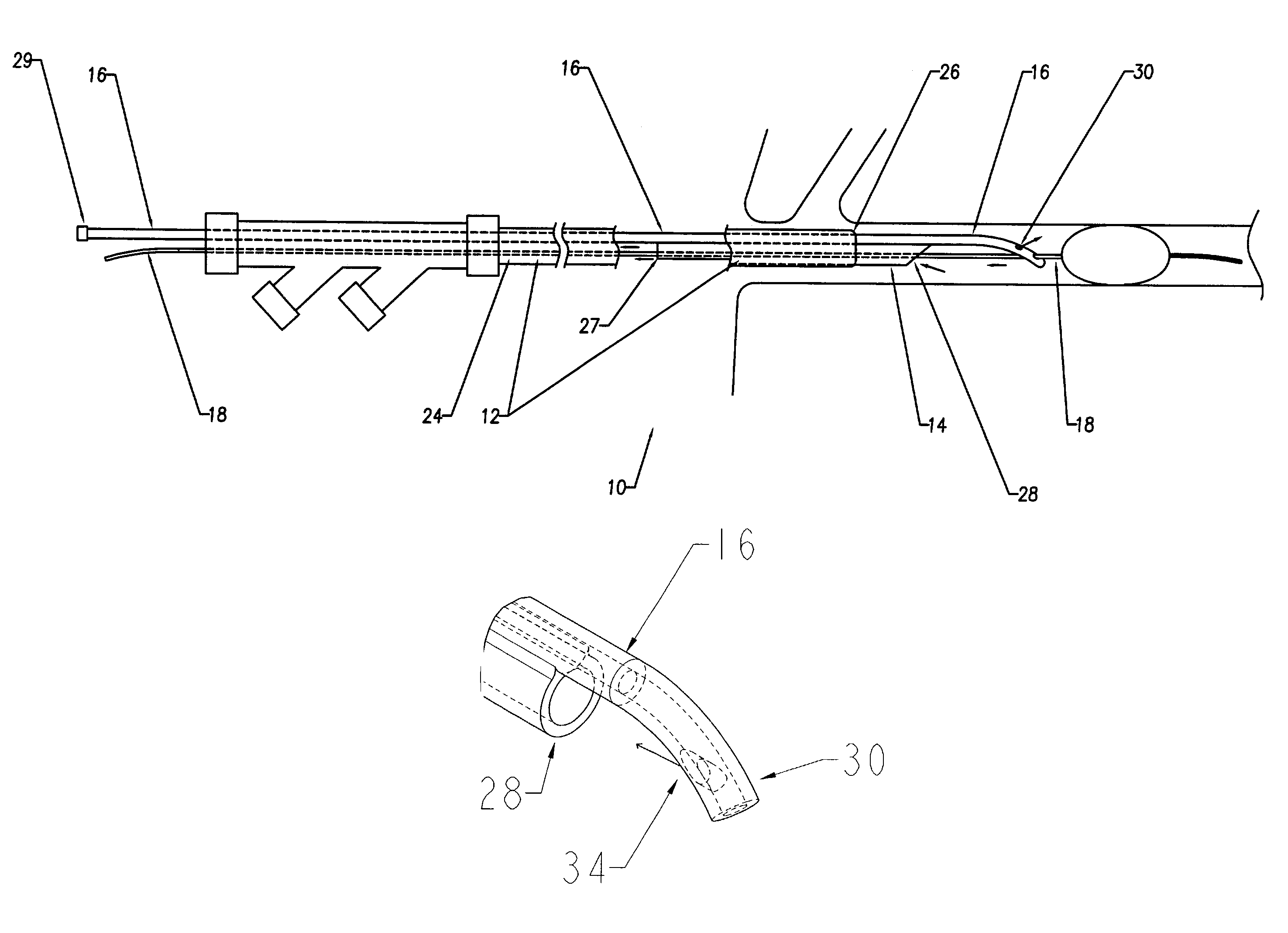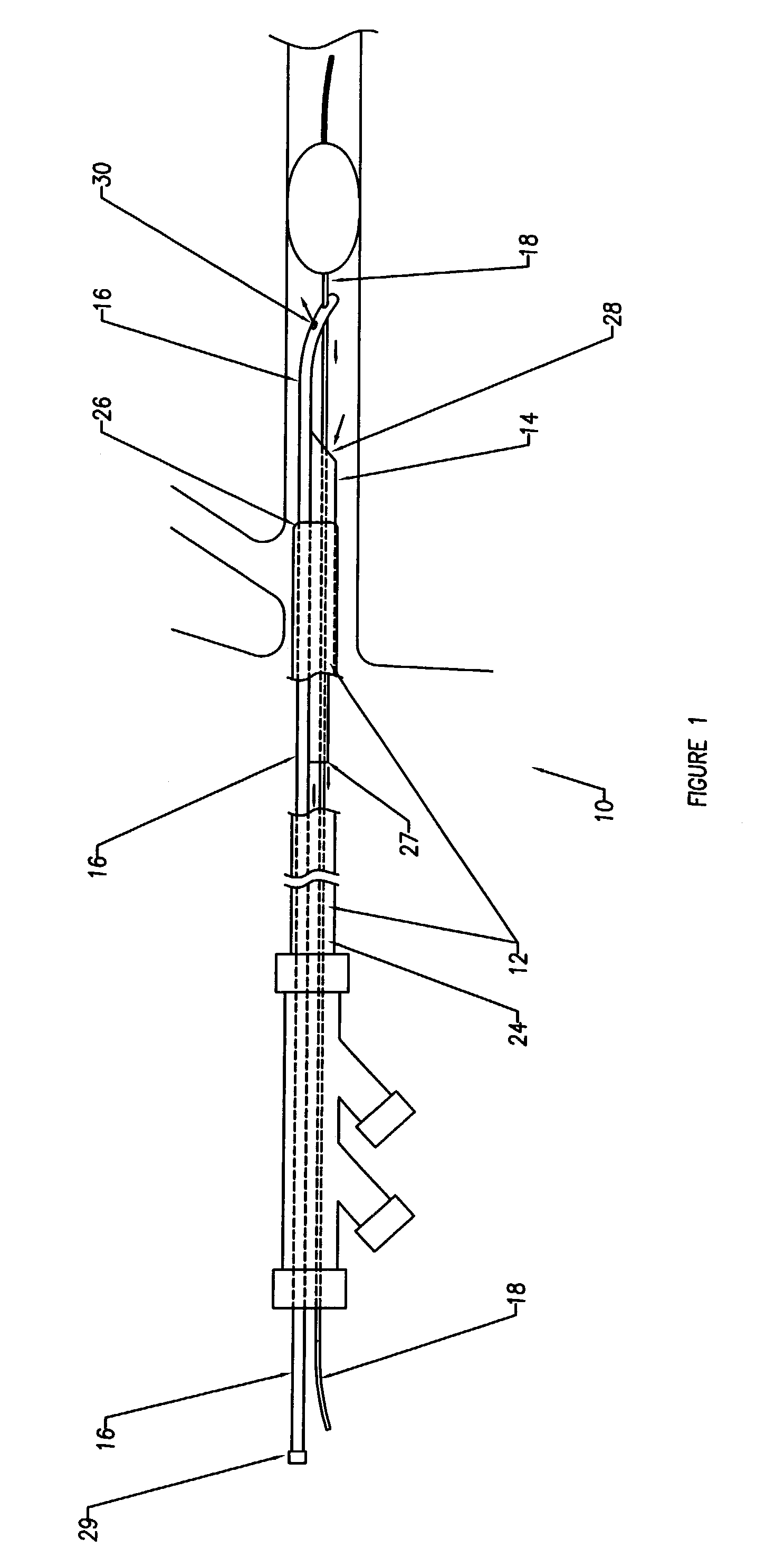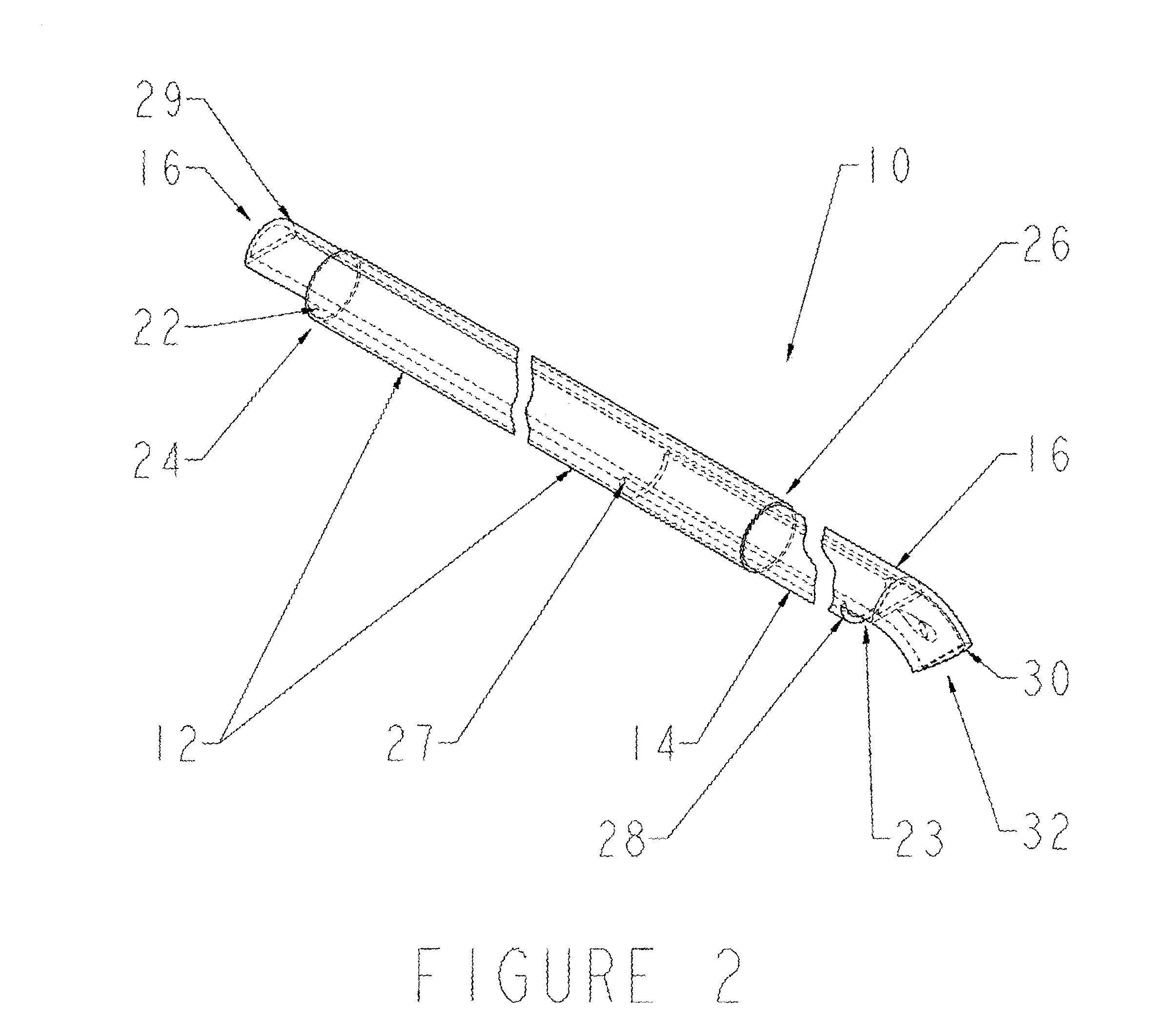Catheter with associated extension lumen
a catheter and extension lumen technology, applied in multi-lumen catheters, medical science, surgery, etc., can solve the problems of difficult challenge, limited effective aspiration catheters, and natural tendency of viscous blood to resist flow in channels
- Summary
- Abstract
- Description
- Claims
- Application Information
AI Technical Summary
Benefits of technology
Problems solved by technology
Method used
Image
Examples
Embodiment Construction
[0022]It is among the objects of the present invention to facilitate intravascular or intra-luminal procedures, especially the clearing of an occluded lumen by, in various preferred embodiments, providing a device for use in delivering infusion / irrigation to the lumen, causing extraction of any debris, and providing distal protection necessary for the procedure.
[0023]Various embodiments will include, among other things, an infusate fluid pathway, and an extraction pathway, pumping means, distal protection means, guidewires, a primary or guide catheter, a catheter extension, and a locating member, various arrangements of these components are discussed below.
Extraction Pathway
[0024]The invention overcomes the drawbacks of the prior art including, but not limited to, the incorporation of measures necessary to reduce the occurrence of cavitation within the extraction pathway of the device. The invention is such that it has the ability to efficiently withdraw fluid and debris from the bo...
PUM
 Login to View More
Login to View More Abstract
Description
Claims
Application Information
 Login to View More
Login to View More - R&D
- Intellectual Property
- Life Sciences
- Materials
- Tech Scout
- Unparalleled Data Quality
- Higher Quality Content
- 60% Fewer Hallucinations
Browse by: Latest US Patents, China's latest patents, Technical Efficacy Thesaurus, Application Domain, Technology Topic, Popular Technical Reports.
© 2025 PatSnap. All rights reserved.Legal|Privacy policy|Modern Slavery Act Transparency Statement|Sitemap|About US| Contact US: help@patsnap.com



